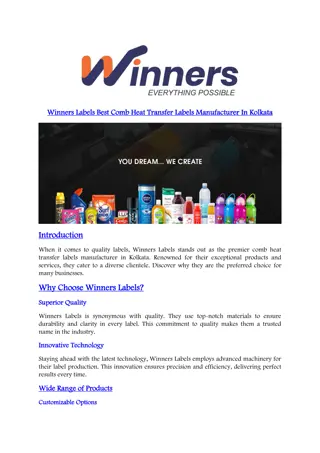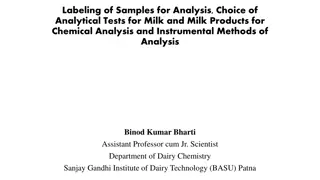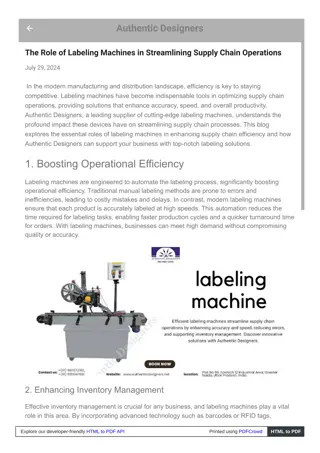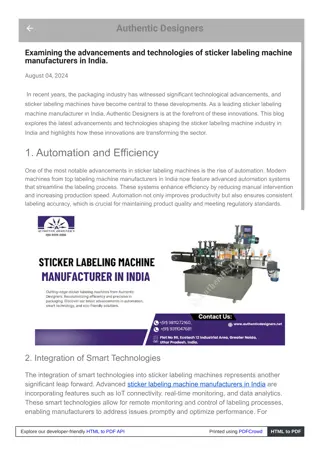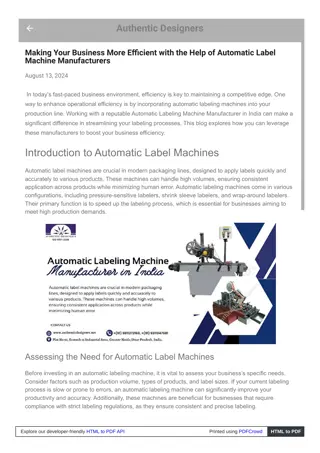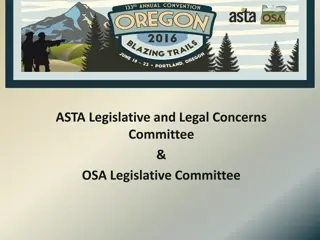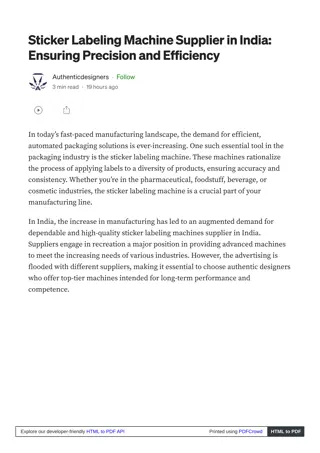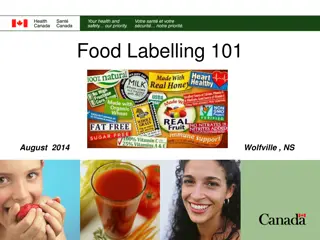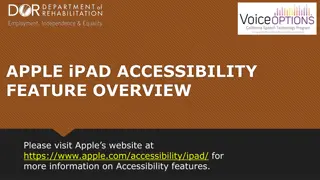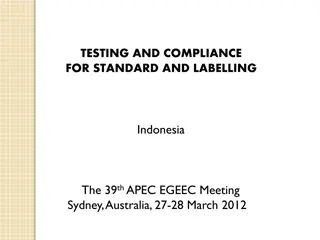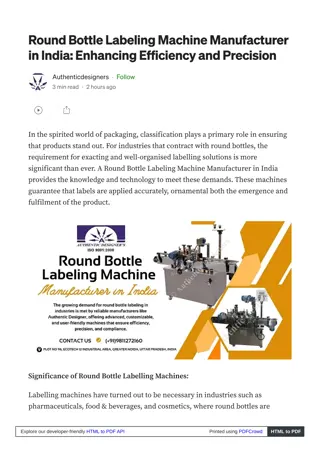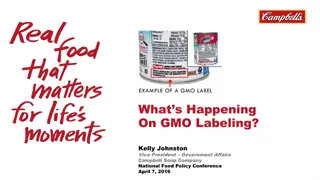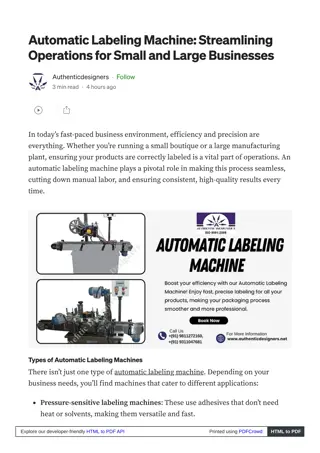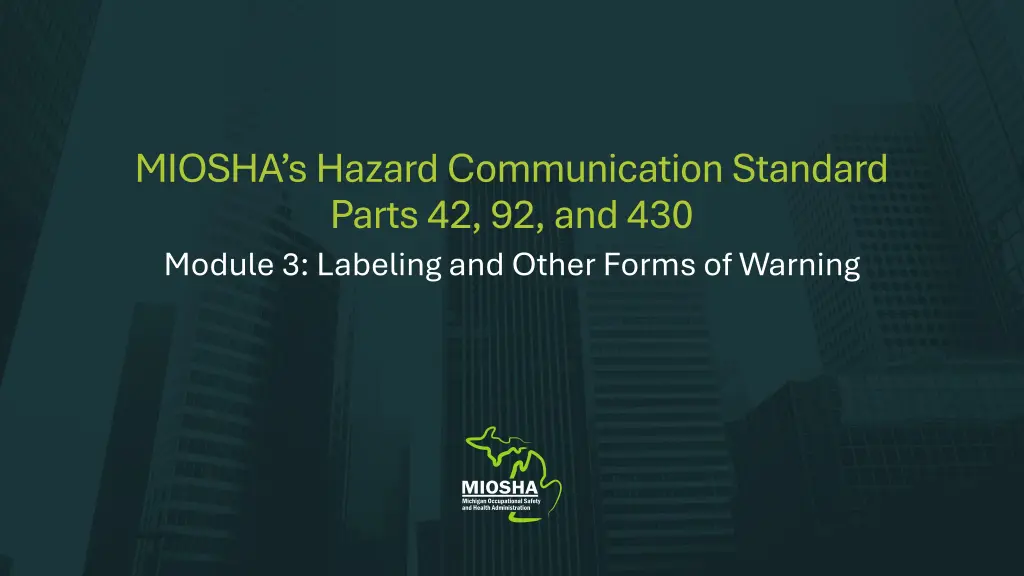
Understanding Hazard Communication Standard Elements
Explore the key elements of hazard communication standards including labeling, signal words, hazard statements, precautionary statements, physical hazards, health hazards, and environmental pictograms. Learn about the importance of label information, signal words severity criteria, hazard classifications, and recommended safety measures. Discover pictograms representing various types of hazards and Department of Transportation pictograms for different substances. Enhance your knowledge of chemical safety and handling protocols to ensure workplace safety.
Download Presentation

Please find below an Image/Link to download the presentation.
The content on the website is provided AS IS for your information and personal use only. It may not be sold, licensed, or shared on other websites without obtaining consent from the author. If you encounter any issues during the download, it is possible that the publisher has removed the file from their server.
You are allowed to download the files provided on this website for personal or commercial use, subject to the condition that they are used lawfully. All files are the property of their respective owners.
The content on the website is provided AS IS for your information and personal use only. It may not be sold, licensed, or shared on other websites without obtaining consent from the author.
E N D
Presentation Transcript
MIOSHAs Hazard Communication Standard Parts 42, 92, and 430 Module 3: Labeling and Other Forms of Warning
Shipped Label Information Applies when a chemical leaves a manufacturer, importer, or distributors workplace. Intended to provide information to the user of the chemical. Label Elements Product identifier Signal word Hazard Statements Pictograms Precautionary Statements Name, U.S. address, and telephone number of the responsible party
Signal Words Word used to indicate the severity of the hazard and alert the reader to the potential hazard. DANGER DANGER (more severe hazard) WARNING WARNING (less severe hazard) The signal words are based on specified criteria from Appendix C of the standard.
Hazard Statements Hazard statements Hazard statements describe the hazards associated with a chemical based on its classification. Examples: Extremely Flammable liquid and vapor Extremely Flammable liquid and vapor Causes skin irritation Causes skin irritation May cause cancer May cause cancer
Precautionary Statements Precautionary statementare phrases that describe recommended measures that should be taken to minimize or prevent adverse effects resulting from exposure to a hazardous chemicalor improper storageandhandling. Precautionary statements Precautionary statements describe recommended measures related to: Prevention Response Storage Disposal Examples: Do not breathe dust/ fumes If inhaled remove person to fresh air Store in a well-ventilated place Dispose of contents in accordance with local regulations Not a mandate for employers/employees to follow
Physical Hazards Physical Hazards Pictograms Health Hazards Health Hazards Environmental Pictograms are a graphic intended to convey information about the hazards of a chemical. Aquatic Toxicity
Department of Transportation "Pictograms" Department of Transportation "Pictograms" Flammable Liquid Flammable Gas Flammable Aerosol Flammable solid Self-Reactive Substances Pyrophorics (Spontaneously Combustible) Self-Heating Substances Substances, which in contact with water, emit flammable gases (Dangerous When Wet) Oxidizing Gases Oxidizing Liquids Oxidizing Solids Explosive Divisions 1.1, 1.2, 1.3 Explosive Division 1.4 Explosive Division 1.5 Explosive Division 1.6 Compressed Gases Acute Toxicity (Poison): Oral, Dermal, Inhalation Corrosive Marine Pollutant Organic Peroxides
Shipped Label Elements Product identifier Signal word Hazard Statements Pictograms Precautionary Statements Name, U.S. address and telephone number of the responsible party
Shipped Label: Sample Can you identify each label component? Pictograms (Flammable and Acute Toxicity Severe) ToxiFlam (Contains: XYZ) Product Identifier Signal Word Hazard Statements Danger! Toxic If Swallowed, Flammable Liquid and Vapor Do not eat, drink or use tobacco when using this product. Wash hands thoroughly after handling. Keep container tightly closed. Keep away from heat/sparks/open flame. - No smoking. Wear protective gloves and eye/face protection. Ground container and receiving equipment. Use explosion-proof electrical equipment. Take precautionary measures against static discharge. Use only non-sparking tools. Store in cool/well-ventilated place. Precautionary Statements IF SWALLOWED: Immediately call a POISON CONTROL CENTER or doctor/physician. Rinse mouth. In case of fire, use water fog, dry chemical, CO2, or "alcohol" foam. Supplemental Information See Safety Data Sheet for further details regarding safe use of this product. Responsible Party MyCompany, MyStreet, MyTown NJ 00000, Tel: 444 966 6666
~100 ml container Small Container Labeling Small Containers (<100 ml) must contain Product Identifier Pictogram(s) Signal Word Chemical manufacturers name and phone number and Statement that the full label is provided on the immediate outer package Very Small Containers (<3 ml) where any label is infeasible must at minimum contain the product identifier Product ID All small container outer packaging must contain All required shipped container elements and, A statement that small containers must be stored in the outer package when not in use The label on the outer package must not be removed or damaged
Workplace (Secondary) Labels Option 1 Option 1 Option 2 Option 2 Include all information found on shipped label containers Product identifier Signal word Hazard Statement Pictograms Precautionary Statements Name, U.S. address and telephone number of the responsible party Develop a labeling system which includes at minimum The Product Identifier AND Words, Pictures, Symbols or a Combination which provide general information regarding the hazards of the chemicals Employees must be able to get specific information on the hazards using other immediately available information (e.g., SDS) Written materials (e.g., signs, placards, etc.) may be used in lieu of affixing labels to individual stationary process containers. AND *Employees must be trained to understand the facility s labeling system*
Workplace (Secondary) Labels Examples Option 1 Option 1 Same Information as the Same Information as the primary shipped container primary shipped container Option 2 Option 2 Sample Label With General Sample Label With General Information Regarding the Hazards Information Regarding the Hazards 99%
Other Important Information Employees must be trained to understand the Shipped and Workplace labeling systems. Labels shall not be removed or defaced. Labels shall be legible, in English, and prominently displayed. Other languages may be present, but English is always required Transfer containers which are immediately used are not required to be labeled. Solid materials (steel beam, solid wood, etc.) may have the label provided with the initial shipment and not resent unless the information on the label changes.
HAZCOM/GHS vs NFPA 704 Differences HAZCOM/GHS HAZCOM/GHS Informs workers about hazards under normal circumstances or foreseeable emergencies. Classifications severity range from 1- 4, with 1 being most severe. Labels include both acute and chronic health hazards information NFPA 704 NFPA 704 Provides basic information for emergency personnel. Classification severity ranging from 0-4, with 4 being the most severe. Labels do not include chronic health hazards information NFPA Diamond
What is Wrong With Each of These Labels? No shipped container label affixed with the six required elements Missing Hazard Information Damaged and Unreadable Label
Example 1 Why Containers and Labels Matter Example 2 An employee working for a cleaning and polishing products manufacturer was mixing a batch of marine mold cleaner. The employee added the wrong chemical to the mixture causing a chemical reaction. The employee inhaled chlorine gas and was hospitalized.

